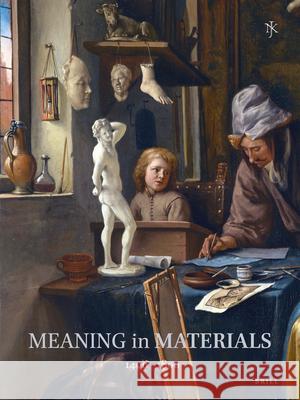Netherlands Yearbook for History of Art / Nederlands Kunsthistorisch Jaarboek 62 (2012): Meaning in Materials: Netherlandish Art, 1400-1800 » książka
Netherlands Yearbook for History of Art / Nederlands Kunsthistorisch Jaarboek 62 (2012): Meaning in Materials: Netherlandish Art, 1400-1800
ISBN-13: 9789004261396 / Angielski / Twarda / 2013 / 296 str.
Netherlands Yearbook for History of Art / Nederlands Kunsthistorisch Jaarboek 62 (2012): Meaning in Materials: Netherlandish Art, 1400-1800
ISBN-13: 9789004261396 / Angielski / Twarda / 2013 / 296 str.
(netto: 566,58 VAT: 5%)
Najniższa cena z 30 dni: 593,51
ok. 30 dni roboczych
Dostawa w 2026 r.
Darmowa dostawa!
Works of art are material and materials have meaning. They determine form, style, and effect and are often chosen intentionally by artists to convey artistic ideas and reinforce expressive effects. An artist's choice of materials both limits and opens up technical possibilities. Depending on their geographical occurrence, rarity or composite nature, materials are valued, compared and imitated; processes that stimulate innovation in the arts. Materials are also charged with manifold cultural connotations, conveying power, beauty, splendor or humbleness. Despite the richness of the topic, the relation between meaning and materials has been neglected in the past. This volume of the Nederlands Kunsthistorisch Jaarboek strives to redress this lacuna, highlighting important links between visual and material culture. The essays written by a number of international, renowned scholars approach a variety of materials in their particular historical, cultural and technological settings, uncovering new and surprising meanings in alabaster, oil paint, glass, wood, stone, copper, ebony, paper, and snow. Table of Contents Ann-Sophie Lehmann, How materials make meaning Michele Tomasi, Materiaux, techniques, commanditaires et espaces. Le systeme des retables a la chartreuse de Champmol Kim Woods, The Master of Rimini and the tradition of alabaster carving in the early fifteenth-century Netherlands Aleksandra Lipińska, Alabastrum, id est, corpus hominis. Alabaster in the Low Countries, a cultural history Koenraad Jonckheere, Images of stone. The physicality of art and the image debates in the sixteenth century Ralph Dekoninck, Between denial and exaltation. The material of the miraculous images of the Virgin in the Southern Netherlands during the seventeenth century Thijs Weststeijn, The gender of colors in Dutch art theory Nadja Baadj, A world of materials in a cabinet without drawers: Reframing Jan van Kessel's The four parts of the world Martha Moffitt Peacock, Paper as power. Carving a niche for the female artist in the work of Joanna Koerten Frits Scholten, Malleable marble. The Antwerp snow sculptures of 1772











